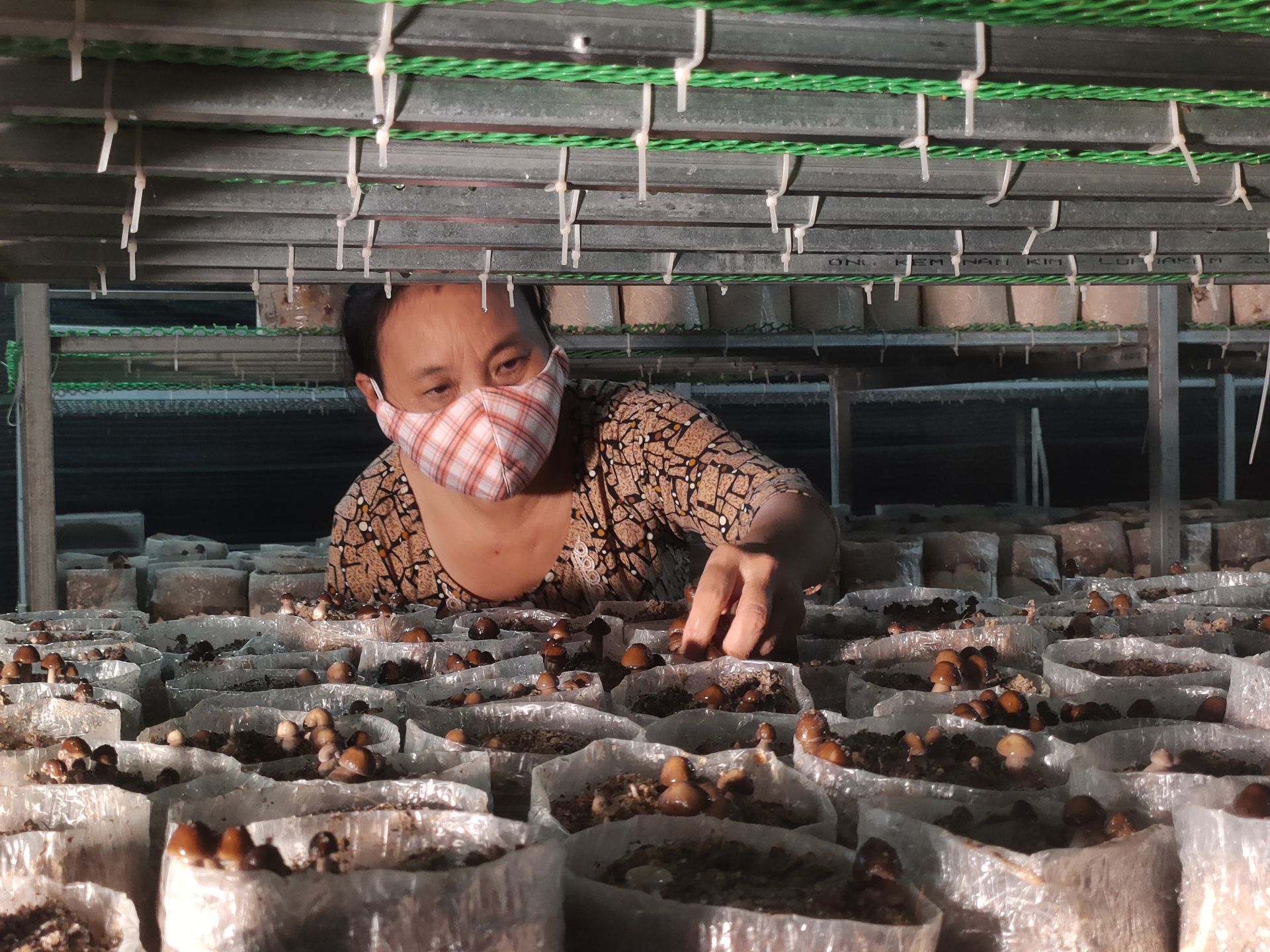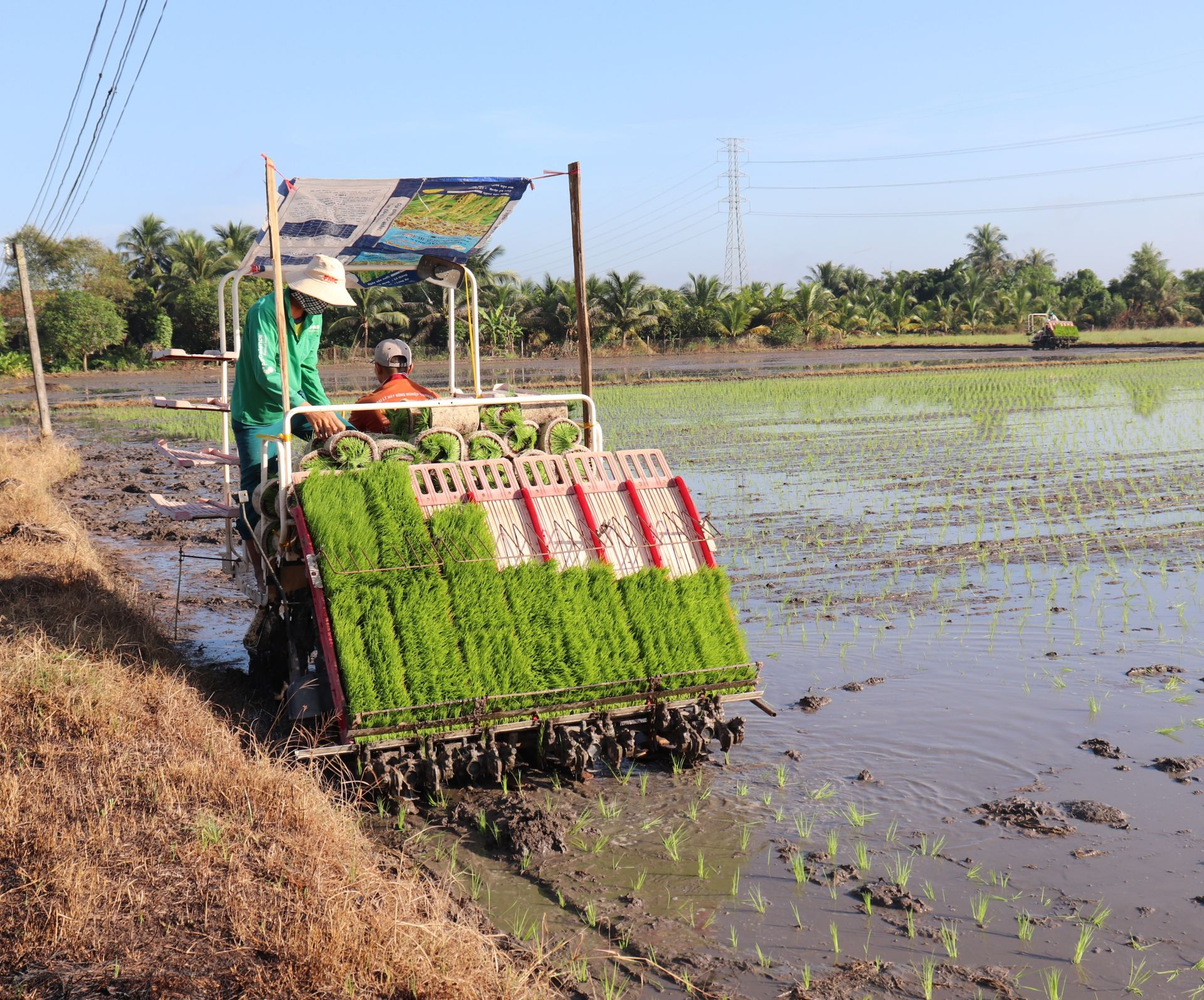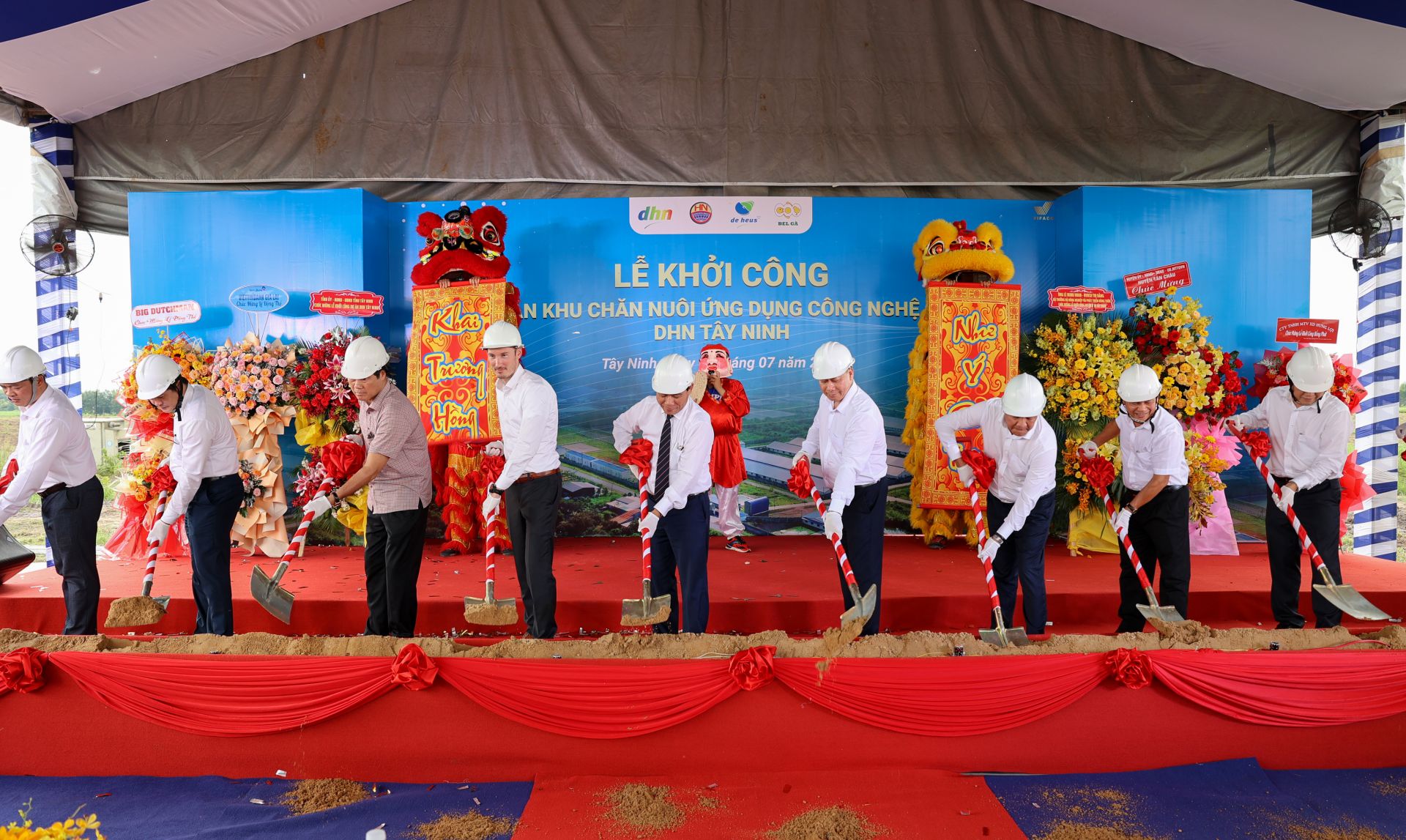BTN - The application of mechanization in production in the province is becoming more synchronized, focusing o...
BTN - The application of mechanization in production in the province is becoming more synchronized, focusing on crops such as rice, sugarcane, and wheat. Fruit orchards apply mechanization in various care processes with machines such as grass plows, irrigation systems, and fertilization.
In recent times, the introduction of new scientific and technological advances has been increasingly applied in practice, contributing to the development of agriculture and rural areas. Resolution of the 11th Provincial Party Congress of Tay Ninh Province considers the development of agriculture, especially clean agriculture and agriculture applying high technology to increase productivity, quality, and competitiveness of the province's agricultural products as one of the key breakthrough programs in the province's socio-economic development in the period 2021-2025.
 Mushroom harvesting in Phước Chỉ commune, Trang Bang town.
Mushroom harvesting in Phước Chỉ commune, Trang Bang town.
Improving productivity, quality, and disease resistance of key crops and livestock
Based on the Congress's Resolution, the province has proposed various directions for agricultural development, including Action Program 180-CTr/TU dated April 20, 2023, of the Provincial Party Committee's Standing Committee implementing Resolution No. 36-NQ/TW dated January 30, 2023, of the Politburo on the development and application of biotechnology to serve sustainable development of the country in the new situation, and the High-Tech Agriculture Application Program in Tay Ninh Province.
According to the Department of Agriculture and Rural Development (DARD), the application of science and technology (S&T) in agricultural development has contributed to increasing productivity, quality, and disease resistance of key crops and livestock in the province.
For rice crops, from 2020-2023, the industry implemented the demonstration of about 365 hectares of high-quality rice varieties such as ST24, ST25, OM 4900, OM 5451, DT8... guiding farmers to apply advanced techniques in production such as the 3 reductions 3 increases, 1 must 5 reduction, applying mechanization to reduce investment costs, increase productivity and product quality, and improve disease resistance.
 Rice planting by machine at the Cooperative of Crop Varieties and Agricultural Services in Bau Don, Go Dau.
Rice planting by machine at the Cooperative of Crop Varieties and Agricultural Services in Bau Don, Go Dau.
For wheat crops, the industry collaborated with the Institute of Agricultural Genetics to test and select 6 potato varieties (HN5, HN3, HN80, HN97, HN36, and HN1) which were received by the Plant Protection Department for circulation certification. Promotion of farming models, technical training, seminars, encouraging people to use new varieties, and applying advanced mechanization from land cultivation, planting, care, fertilization, and harvesting helped increase wheat yield by an average of 15% compared to wheat varieties affected by leaf rust outside the model.
For beef cattle, to improve productivity and quality of beef herds, the Agriculture sector conducted crossbreeding of beef cattle focusing on meat through artificial insemination from high-quality beef cattle sperm. Currently, the province's beef herd has a proportion of Zebu crossbreeds (crosses between local yellow cattle and Zebu breeds such as Sind, Brahman, Sahiwal) accounting for about 98% of the total herd. From 2020-2023, 10,800 doses have been inseminated, contributing to increasing beef weight from 350 kg/head to 500 kg/head.
In recent years, the application of S&T in crop and livestock disease prevention has also been emphasized by the Agriculture sector, contributing to early prevention of harmful pests and diseases on crops and livestock, increasing productivity, and reducing losses for farmers. In crop cultivation, the insect trap system is maintained and implemented annually, daily monitoring of insect data under the light distribution in the locality serves as the basis for proposing rice planting schedules each year.
Moreover, managing pink stem borer with parasitic wasps specialized in Anagyrus lopezi has been recognized as a new technical advancement, with 572,600 pairs raised and released 492,100 pairs of parasitic wasps contributing to accelerating the prevention and eradication of pink stem borer outbreaks in the province.
In addition, the Agriculture sector has experimented with models to control root rot disease in cassava and potato tubers using biocontrol fungus Trichoderma sp. in some key wheat-growing areas; farmers use biofungicides, antagonistic bacteria to control harmful fungi in the soil, combined with compost, and microorganism fertilizers have effectively limited root rot and root rot diseases on crops.
On livestock, annual vaccination campaigns on livestock and poultry farms in the province contribute to strengthening disease prevention work. In the province, Duong Minh Chau district is certified as a safe zone for avian influenza and Newcastle disease in chickens, and 65 livestock farms receive certificates of disease-safe operations (46 chicken farms, 17 pig farms, 2 cattle farms). Six communes in Gò Dầu district are certified as disease-safe zones for avian influenza and Newcastle disease in chickens, and nine communes in Bến Cầu district are certified as disease-safe zones for foot-and-mouth disease in cattle.
Application of S&T in advanced production models, towards clean agriculture
High-tech agriculture models (greenhouses, membrane) are gradually being invested and implemented. By 2023, there were about 35 hectares of vegetable production (cucumbers, leafy vegetables) in greenhouses and membrane, so the appearance and quality of products will be higher than those grown directly in the fields. Most greenhouses and membrane use automation technology in watering, fertilizing, and some farms apply technology in temperature control and humidity.
 Groundbreaking ceremony for the High-tech Livestock Farming Zone project in Tan Chau.
Groundbreaking ceremony for the High-tech Livestock Farming Zone project in Tan Chau.
The closed-loop livestock farming model is also gradually developing, with Vinamilk dairy farm having a total herd of about 8,000 dairy cows. The application of grass planting models for green feed, cow manure is utilized to feed earthworms or directly fertilize grass, all by-products are utilized for the circular economy, contributing to reducing 50% of feed costs and agricultural waste treatment, bringing high economic efficiency.
In addition, some models apply S&T in production, such as Vinamilk's high-tech dairy farming facilities, Minh Đăng with the use of fermented mixed feed, cooling fan systems, automatic milking machines, robot feeders, and chip attachment to monitor cattle productivity or pig and chicken farming models, farm-scale investment, modern, stable climate-controlled barns widely applied in production.
From 2017-2022, the Agriculture sector supported over 120 GAP-certified establishments with a total area of 9,015 hectares (including 971 hectares of vegetables, 1,879 hectares of fruit trees, and 6,165 hectares of rice). Organic production is also gradually forming with 54 hectares of wheat, 4 hectares of pumpkin grown in greenhouses certified as organic. By 2023, there were 73 livestock farms certified with VietGAHP certificates in the province.
The application of mechanization in production in the province is becoming more synchronized, focusing on crops such as rice, sugarcane, and wheat. Fruit orchards apply mechanization in various care processes with machines such as grass plows, irrigation systems, and fertilization.
Using Google Earth software to locate the coordinates of livestock farms helps in evaluating safe distances and ensuring environmental hygiene management
Via Bao Tay Ninh